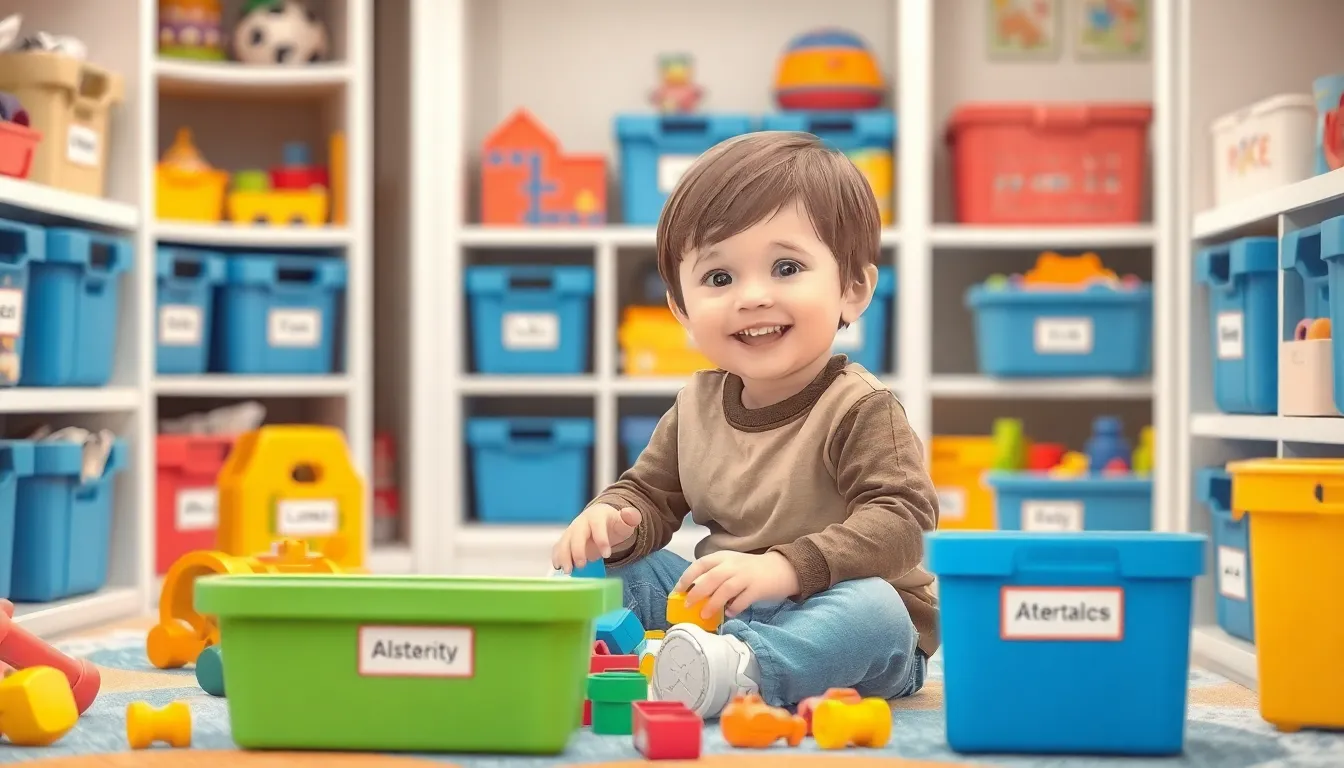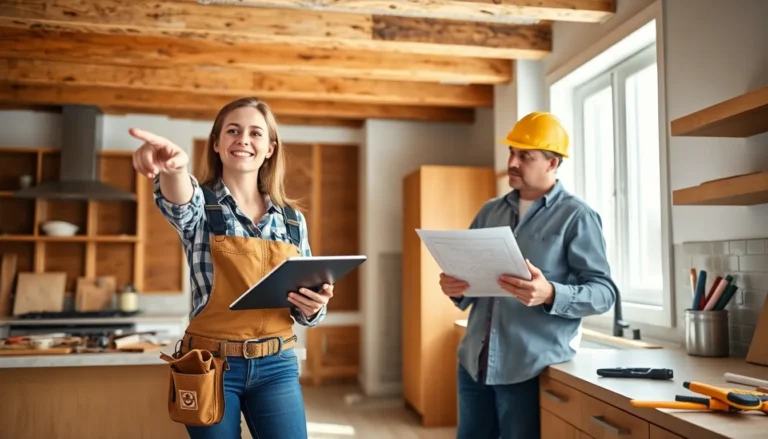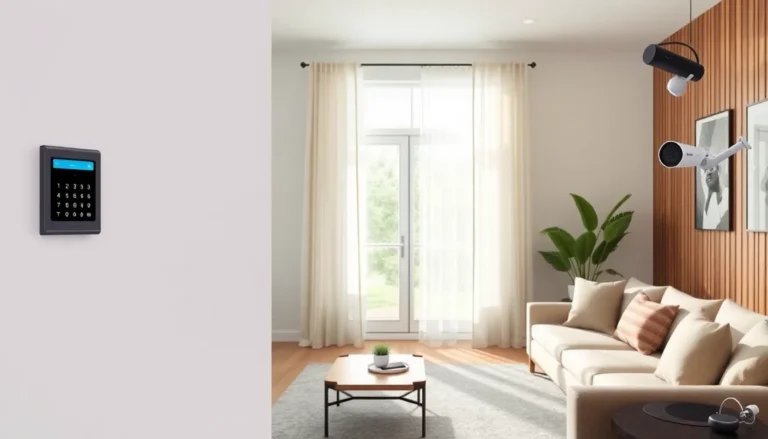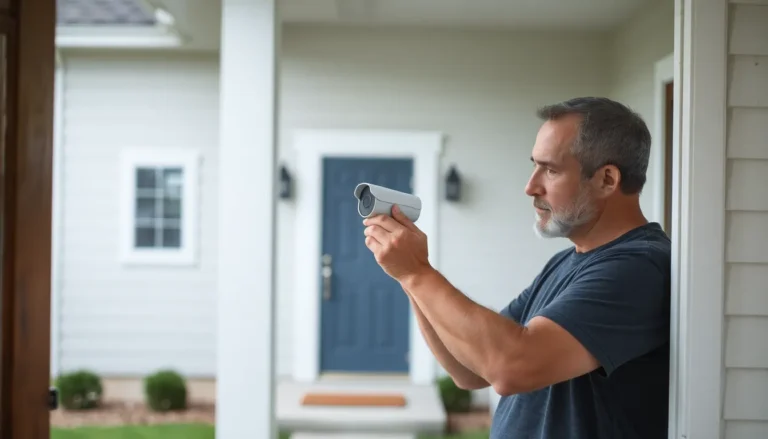Tired of stepping on rogue LEGO bricks or finding that elusive toy dinosaur lurking under the couch? It’s time to tackle the chaos and reclaim your living space with some clever toy organizing ideas. Not only will a tidy play area save your feet from painful encounters, but it’ll also create a more enjoyable environment for kids and adults alike.
Table of Contents
ToggleCreative Toy Organizing Ideas
Utilize clear bins for toy storage. Clear bins allow visibility, making it easy for children to identify their toys. Label each bin based on toy type, such as blocks, action figures, or stuffed animals. This labeling system simplifies clean-up time and helps kids learn organization.
Incorporate shelving units to maximize vertical space. Shelves provide an efficient method to store and display toys. It also creates a visually appealing arrangement, allowing children to access toys while minimizing clutter on the floor.
Employ multi-functional furniture like storage ottomans. These pieces serve as seating while hiding toys inside, effectively combining function and organization. Children find it convenient to stow their toys away after playtime.
Create a designated play zone. Establishing a specific area with colorful rugs, easy-to-reach shelves, or storage bins delineates the play area. This helps children understand boundaries and responsibilities associated with returning toys after use.
Consider an under-bed storage solution. Using under-bed storage bins frees up valuable floor space while keeping toys organized. Selecting shallow containers allows easy access to toys without cluttering visible areas.
Introduce pegboards for hanging toys. Pegboards provide a versatile option for organizing smaller toys such as art supplies or action figures. Kids enjoy seeing their toys displayed and can learn to put them back after use.
Lastly, involve children in the organizing process. Encouraging children to participate in sorting and arranging toys fosters responsibility. This collaborative effort can transform organizing into a fun activity.
Benefits Of Organizing Toys

Organizing toys offers several advantages that enhance both play and living spaces.
Reducing Clutter
Reducing clutter creates a clean and spacious environment. By arranging toys, families minimize the chaos that often accompanies playtime. Organized areas prevent the overwhelming feeling that comes from excess items. Visibility improves when toys get stored in labeled containers, making clean-up simple. Less clutter leads to safer spaces, reducing the risk of accidents caused by scattered toys. In addition, organized play areas encourage children to engage more creatively with their toy collections.
Promoting Responsibility
Promoting responsibility becomes easier when children participate in organizing. Involving kids in the process teaches them important skills while making them feel invested. They learn to take care of their belongings, which boosts their sense of ownership. Understanding how to properly store toys instills habits that extend beyond playrooms. Kids also develop organizational skills that will benefit them throughout life. Moreover, this activity fosters teamwork, strengthening bonds between caregivers and children as they work together.
DIY Toy Organizing Solutions
Creative toy organizing solutions simplify managing toy clutter. Various methods allow for efficiency and fun in organizing.
Using Bins And Baskets
Clear bins and colorful baskets enhance visibility for toys, making it easier for children to pick up after playtime. Labels on bins indicate specific toy categories like action figures or building blocks, promoting independent clean-up. Stackable bins conserve floor space, while open-top baskets encourage quick access, motivating children to keep toys organized. Using different sizes enables tailored storage options for larger plush toys and smaller art supplies. Regularly rotating toys among bins prevents boredom and encourages engagement with various toys.
Repurposing Furniture
Old furniture can serve new purposes in toy organization. A wooden dresser transforms into a storage unit, with drawers housing games and art supplies. Coffee tables that include shelving beneath create additional space for board games and books. Incorporating crates or vintage suitcases as unique storage options adds character to a playroom while keeping toys hidden from view. Using a bookshelf with shallow bins encourages easy access to smaller toys and books, enhancing aesthetics alongside functionality. Combining style and organization creates a well-designed play area.
Store-Bought Organizing Options
Store-bought options provide a variety of solutions for toy organization. Plastic bins come in various sizes and shapes, allowing for effective categorization of different toy types such as action figures, blocks, and art supplies. Clear bins offer visibility and make it easy for children to find their favorite toys while promoting independence.
Shelving units serve multiple purposes by maximizing vertical space in play areas. Some units feature adjustable shelves, accommodating growth in a child’s toy collection. Others come with built-in drawers, adding an extra layer of organization for smaller items.
Storage ottomans add a stylish touch to living spaces. These dual-purpose furniture pieces provide seating while hiding toys inside, keeping the area tidy. Similarly, decorative baskets pair visual appeal with functionality, making them perfect for holding stuffed animals or smaller toys.
Toy chests offer a traditional solution with ample space for various items. Many designs include safety features, ensuring children can safely access their toys. Rolling carts also present an efficient option, as they allow for easy movement of toys from one room to another.
Labeling systems enhance organization by designating storage areas for specific toy categories. Adhesive labels can be easily attached to bins, making it simple for children to learn where items belong. Color-coded systems further streamline the process, as specific colors signify different categories.
Finally, investing in toy organizers specifically designed for certain items, such as art supplies or LEGO bricks, simplifies the overall organization. These specialized organizers maximize usage and provide clear spaces for each type of toy.
Tips For Maintaining Organization
Establishing a routine helps maintain organization. Regularly scheduled clean-up sessions encourage children to take responsibility for their play area. Though it may take time, consistency reinforces habits that lead to a tidy environment.
Utilizing clear bins enhances visibility for easy identification of toys. Labeling each bin ensures children know where specific toys belong, reducing the chance of misplacement. Involving children in labeling fosters their engagement in the organization process, making them more willing to keep their space tidy.
Designating specific areas for different types of toys streamlines the organization. Establishing zones for action figures, arts and crafts, and building materials simplifies the clean-up process. When children understand where everything goes, they’re more likely to return items to their rightful places.
Routine rotations of toys keep the play area fresh and exciting. Periodically swapping out toys not only maintains interest but also prevents clutter buildup. This practice allows for a more manageable organization system, reducing overwhelm during clean-up sessions.
Creating a reward system encourages children to participate actively in maintaining organization. Small incentives for keeping the play area tidy motivate children to adopt responsible habits. Recognizing their effort reinforces positive behavior, leading to enduring organizational skills.
Regular assessments of the organization system ensure it remains effective. Evaluating bin usage and the arrangement of toys helps identify what works best for the space. Adjustments based on these evaluations keep the toy storage system functional over time.
Incorporating multi-functional furniture contributes to maintaining organization. Storage ottomans and coffee tables with shelves offer both utility and aesthetics. Choosing attractive storage solutions makes organization visually appealing, encouraging children to keep their areas clean.
Organizing toys doesn’t just enhance the play area; it transforms the entire home environment. By implementing creative storage solutions and involving children in the process, families can foster responsibility while reducing clutter. A tidy space encourages imaginative play and makes clean-up easier for everyone.
Regular maintenance routines and thoughtful organization strategies ensure that the play area remains functional and enjoyable. With the right tools and a bit of creativity, anyone can create a harmonious balance between fun and order. Embracing these toy organizing ideas can lead to a more peaceful and engaging space for both kids and adults alike.



